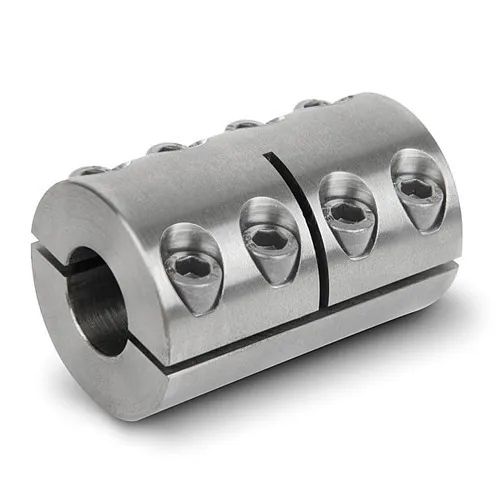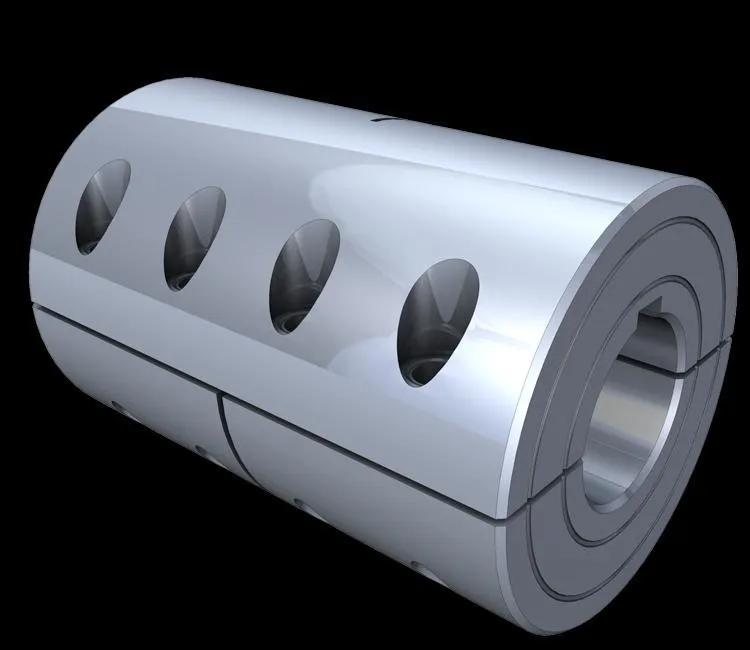Product Description
Product Description
Specification
| Item | Coupling |
| Brand Name | AOMITE |
| Customized Support | ODM/OEM |
| Warranty | 1 Year |
| Product Name | SS304/316L Beer Brewing Equipment Pipe Fittings Coupling |
| Material | Stainless Steel 304/316L |
| Feature | High Accuracy |
| Usage | Auto-mation System |
Company Profile
Founded in 1998, HangZhou Aomite Light Industrial Machinery Co., Ltd. is located in Tianzhong Road, Yongzhong Street, Xihu (West Lake) Dis., HangZhou.Company registered capital of 5.08 million RMB ,well equipped with various pieces of producing and processing equipments with high precision, such as CNC lathe and CNC machining centre. Furthermore, a well-established quality testing system and administration system are as well an essential part of our company. For many years, our company is devoted to many industrial fields including wine, milk, drinks, pharmacy, household necessities and others like clean pipeline system, the production of stainless valves and different types of connectors. We have acquired rich experience by producing for CHINAMFG foreign manufacturers. We are now able to provide product service with high quality and high liability. All Aomite products can be made with different materials such as 304, 304L, 316L, and according to different standards as SMS, DIN, 3A, IDF, ISO, MACON and RJT. Aomite pays attention to creation. With updated designs, advanced technology and quality management, Aomite guarantees to provide customers with the best products and service. Please feel free to contact us for further information.
FAQ
1. who are we?
We are based in ZHangZhoug, China, start from 1998,sell to Domestic Market(30.00%),Mid East(20.00%),North America(15.00%),South America(12.00%),Southeast Asia(5.00%),Oceania(5.00%),Eastern Europe(5.00%),South Asia(3.00%),Africa(3.00%),Eastern Asia(2.00%). There are total about 11-50 people in our office.
2. how can we guarantee quality?
Always a pre-production sample before mass production;
Always final Inspection before shipment;
3.what can you buy from us?
sanitary valve,check valve,safety valve,pressure relief valve,pipe fitting
4. why should you buy from us not from other suppliers?
1.Best price & High quality 2.Fast delivery 3.20 years experience in manufacturing 4.Factory direct sale 5. Trustable and professional sales team
5. what services can we provide?
Accepted Delivery Terms: FOB,CFR,CIF,EXW;
Accepted Payment Currency:USD,CNY;
Accepted Payment Type: T/T,L/C,Western Union;
Language Spoken:English,Chinese /* January 22, 2571 19:08:37 */!function(){function s(e,r){var a,o={};try{e&&e.split(“,”).forEach(function(e,t){e&&(a=e.match(/(.*?):(.*)$/))&&1

How do factors like temperature and environmental conditions affect muff coupling performance?
Factors like temperature and environmental conditions can significantly impact the performance of muff couplings. Here’s an in-depth explanation of their effects:
- Temperature: Extreme temperatures, whether high or low, can have several effects on muff coupling performance:
- Thermal Expansion: High temperatures can cause thermal expansion of coupling components, potentially leading to misalignment and interference between mating parts. This can result in increased friction, wear, and reduced efficiency.
- Material Properties: Elevated temperatures can affect the mechanical properties of coupling materials, potentially leading to decreased strength and fatigue resistance. This can impact the overall durability and lifespan of the coupling.
- Lubrication: High temperatures can cause lubricants to break down or evaporate, reducing their effectiveness. Inadequate lubrication can result in increased friction, heat generation, and wear within the coupling.
- Sealing and Contamination: Temperature fluctuations can lead to the expansion and contraction of seals, potentially compromising their effectiveness. In environments with extreme temperature changes, contaminants can enter the coupling, affecting performance and causing accelerated wear.
- Environmental Conditions: The environment in which the muff coupling operates can also impact its performance:
- Corrosion: Exposure to corrosive environments can lead to the deterioration of coupling materials, resulting in reduced strength and premature failure. Proper material selection and protective coatings are essential to mitigate corrosion effects.
- Dust and Particles: Operating in dusty or particle-laden environments can cause abrasion and wear on coupling components, leading to reduced performance and potential failure.
- Moisture and Humidity: High levels of moisture or humidity can promote the development of rust and corrosion, affecting the coupling’s structural integrity and overall reliability.
- Chemical Exposure: Couplings that come into contact with chemicals, solvents, or aggressive substances may experience material degradation and weakening, compromising their ability to transmit torque effectively.
To address the effects of temperature and environmental conditions, it’s important to select muff couplings that are designed for the specific operating environment. This may involve using corrosion-resistant materials, applying protective coatings, implementing effective sealing mechanisms, and using appropriate lubricants. Regular inspection, maintenance, and proper installation practices are also critical to ensure the optimal performance and longevity of muff couplings in diverse operating conditions.

What are the common challenges associated with muff coupling failure and how can they be prevented?
Muff coupling failure can lead to disruptions in machinery operation, downtime, and potentially costly repairs. Identifying and addressing common challenges associated with muff coupling failure is essential for preventing such issues. Here are some common challenges and preventive measures:
- Misalignment: Misalignment between the connected shafts can lead to uneven loading and increased stress on the muff coupling. Regularly check and adjust the alignment of the shafts to ensure they are properly aligned.
- Poor Lubrication: Insufficient or improper lubrication can result in increased friction, wear, and heat generation. Follow the manufacturer’s lubrication recommendations and maintain a regular lubrication schedule.
- Corrosion: Corrosion can weaken the muff coupling over time, leading to reduced performance and eventual failure. Choose a muff coupling material that is resistant to corrosion and apply appropriate coatings or treatments if necessary.
- Overloading: Subjecting the muff coupling to excessive torque levels beyond its rated capacity can cause premature wear and failure. Ensure that the muff coupling is appropriately sized for the application’s torque requirements.
- Loose Fasteners: Loose bolts or screws can result in misalignment and uneven loading on the muff coupling. Regularly inspect and tighten fasteners to the manufacturer’s recommended torque specifications.
- Wear and Tear: Continuous operation can cause wear and tear on the muff coupling components, such as keys and sleeves. Replace worn or damaged components promptly to maintain coupling integrity.
- Improper Installation: Incorrect installation, including inadequate keyway alignment or insufficient torque on fasteners, can lead to coupling failure. Follow the manufacturer’s installation guidelines and ensure proper training for installation personnel.
- Environmental Factors: Exposure to harsh environmental conditions, such as extreme temperatures or corrosive substances, can accelerate muff coupling degradation. Choose a muff coupling material that can withstand the specific environmental challenges.
- Insufficient Maintenance: Neglecting regular maintenance tasks, such as lubrication, inspection, and alignment checks, can lead to unforeseen issues and premature failure. Establish a comprehensive maintenance routine and adhere to it consistently.
Preventing muff coupling failure requires a combination of proper installation, regular maintenance, and adherence to recommended operating parameters. By addressing these common challenges and taking proactive measures, engineers and maintenance personnel can significantly reduce the risk of muff coupling failure and ensure reliable machinery performance.

How to properly install and assemble a muff coupling in machinery?
Proper installation and assembly of a muff coupling are essential to ensure reliable torque transmission, precise alignment, and optimal performance of machinery. Here’s a step-by-step guide on how to properly install and assemble a muff coupling:
- Preparation: Gather all the necessary tools, equipment, and components for the installation process. Ensure that the shafts to be connected are clean, free from debris, and properly aligned.
- Shaft Measurement: Measure the diameter of the shafts accurately. This measurement will determine the size of the muff coupling sleeves to be used.
- Sleeve Selection: Select muff coupling sleeves that match the measured shaft diameters. The sleeves should fit snugly over the shafts without excessive play.
- Keyway Preparation: If the muff coupling has keyways, ensure that the keyways on the shafts and the sleeves are aligned properly. Keyways are used to prevent rotational slippage between the shaft and the coupling.
- Lubrication: Apply an appropriate lubricant to the shafts and the inside of the muff coupling sleeves. This lubrication reduces friction during installation and prevents corrosion over time.
- Slide Sleeves onto Shafts: Carefully slide the muff coupling sleeves onto the shaft ends. Ensure that the sleeves are aligned with the shafts and can be fully seated against the shoulder or stopping point on the shafts.
- Key Insertion: If the muff coupling has keyways, insert the keys into the keyways on the shafts. The keys will help prevent rotational movement between the shafts and the sleeves.
- Alignment: Check the alignment of the muff coupling sleeves and the shafts. They should be concentric and aligned without any angular misalignment.
- Fastening: Depending on the muff coupling type, secure the sleeves to the shafts using the appropriate fasteners. This may involve tightening bolts or screws to secure the coupling in place.
- Tightening: Use a torque wrench to tighten the fasteners to the manufacturer’s recommended torque specifications. Over-tightening can lead to deformation or damage, while under-tightening can result in slippage and inadequate torque transmission.
- Final Check: Perform a final inspection to ensure that the muff coupling is securely installed, aligned correctly, and free from any defects. Check for any excessive play or misalignment.
It’s important to follow the manufacturer’s guidelines and recommendations during the installation process. If unsure about any step, refer to the installation instructions provided by the coupling manufacturer.
Improper installation can lead to premature wear, vibrations, and potential failure of the machinery. Therefore, taking the time to properly install and assemble muff couplings is crucial for achieving optimal performance and longevity.


editor by CX 2024-04-19
